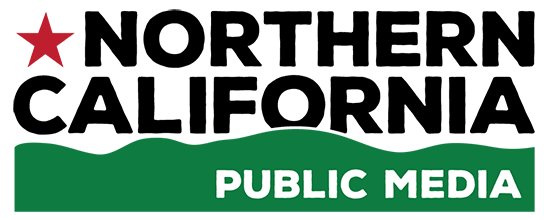 photo credit: Tina Caputp/KRCB
photo credit: Tina Caputp/KRCBDirector Alexander Payne (center) and Hitching Post owner Frank Ostini (right) address an audience in Napa.
October 2024 marks the 20-year anniversary of “Sideways,” a comedy about two friends taking a road trip to Santa Barbara County wine country.
The movie racked up multiple Oscar nominations and a win for Best Adapted Screenplay.
It also had a surprising real-world impact on the U.S. wine industry.
If audiences remember just one line from the movie, it’s this declaration from the main character, Miles—played by Paul Giamatti: “If anyone orders merlot, I'm leaving. I am NOT drinking any f***ing merlot!"
As much as Miles claims to despise merlot, he adores pinot noir. He waxes poetic throughout the film about the variety, calling its flavors “the most haunting and brilliant and subtle and ancient on the planet.”
Who wouldn’t want to drink some of that?
In the movie’s aftermath, between 2005 and 2008, pinot noir sales surged 16 percent while merlot sales declined 2 percent.
There was even a name for the phenomenon: The Sideways Effect—and it’s still being felt to this day.
USDA figures show that merlot plantings in California declined 35 percent between 2004 and 2023. Meanwhile, pinot noir acreage almost doubled.
“When I found out that 'Sideways' was somehow having an impact on the wine world, I was—I don’t know—shocked, surprised, slightly horrified,” says Alexander Payne, the film’s director. “The whole merlot thing was just—it’s one line in the movie and it was a joke. I think there was a lot of overproduced, flabby merlot around.”
Many wineries saw a big drop in merlot demand after "Sideways," but not all of them suffered.
Kimberlee Nicholls has been making merlot at Markham Vineyards in Napa for over 30 years, and she says she’s not holding a grudge. She even made a "Sideways" tribute wine—a merlot called Right Side—to celebrate the movie’s 20th anniversary this year.
“In 1990, when our wine was on the cover of the Wine Spectator, merlot got super popular, and everyone was planting merlot—perhaps in the wrong locations,” Nicholls says. “So having this movie come out that pooh-poohed merlot really gave people the opportunity to make sure that merlot was growing in the right locations.”
For pinot noir producers and businesses in the Santa Ynez Valley, where the movie was filmed, “Sideways” was like winning the lottery. People from all over the world began pouring into the region to visit the places featured in the movie—including the Hitching Post II restaurant in Buellton.
“The restaurant increased by 40% over an eight-month period of time, starting in October or November of 2004, and then it slowly grew,” says Frank Ostini, who owns the restaurant along with Hitching Post Wines. “It was craziness.”
Ostini also saw a 400% jump in sales for his Hitching Post wines—especially pinot noir. After the movie came out, the winery increased its production from 4,000 cases a year to 16,000—and demand has stayed at that level ever since.
That came as a real surprise to Ostini. He wasn’t even sure anyone would actually see the movie.
“They said they were going to make us famous, but we knew—that’s what everybody says,” Ostini recalls. “They didn't have any money to promote it. Maybe it would be in art houses. Maybe they'd get nominated for some awards. It was all pie-in-the-sky ideas, and it was never going to happen. We were just skeptics in general. But were proven way wrong.”
Not only did people see “Sideways”—they loved it.
“That movie, people will watch it in a hundred years, and they'll know what we were doing,” Ostini says. “So, I feel like it almost gives us a little piece of immortality—all of us in the wine business.”
As for Payne, he says he’s grateful that “Sideways” has stood the test of time.
“Whether it's because of the story itself or the comedy, or the wine element, or the combination thereof, I'm just so happy and pleasantly surprised and astonished that people are still watching this movie. It just makes me so happy,” Payne said.

 Live Radio
Live Radio




